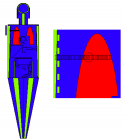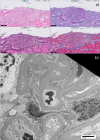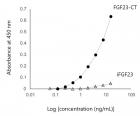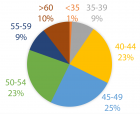Abstract
Review Article
Microchimerism may be the cause of psychiatric disorders
Osman Demirhan* and Bülent Demirbek
Published: 02 December, 2019 | Volume 3 - Issue 1 | Pages: 042-046
Microchimerism is a bidirectional exchange of fetal and maternal cells during pregnancy (Figure 1). Pregnancy is the most common and natural cause of chimerism, and bi-directional trafficking of hematopoietic cells occurs through the placenta. Therefore, we are all born as microchimera [1,2]. Although there are many unanswered questions it is thought that chimerism has an important role in human health. For many years, the clinical effects of maternal microchimeric cells (MMcCs) in organ repair and cancer therapy have just begun to be understood. While the mission of chimerism is straight forward, the subject is profound. Chimerism carries the potential for disease as well as for health benefits. Recent studies have shown that maternal stress and infections in pregnancy affect fetal neuro development and increased the risk of neurological or psychiatric disorders in the future life of the fetus. This article describes the role of Mc in the etiology of psychotic disorders.
Read Full Article HTML DOI: 10.29328/journal.apmh.1001009 Cite this Article Read Full Article PDF
References
- Miranda PD, Goulmy E. We are all born as microchimera. Chimerism. 2013; 4: 18-19. PubMed: https://www.ncbi.nlm.nih.gov/pubmed/23262442
- Guettier C, Sebagh M, Buard J, Feneux D, Ortin-Serrano M, et al. Male cellmicrochimerism in normal and diseased female livers from fetal life to adulthood. Hepatology. 2005; 42: 35-43. PubMed: https://www.ncbi.nlm.nih.gov/pubmed/15962317
- Zeng XX, Tan KH, Yeo A, Sasajala P, Tan X, et al. Pregnancy-associated progenitor cells differentiate and mature into neurons in the maternal brain. Stem Cells Dev. 2010; 19: 1-12. PubMed: https://www.ncbi.nlm.nih.gov/pubmed/20707697
- Dubernard G, Aractingi S, Oster M, Rouzier R, Mathieu MC, et al. Breast cancer stroma frequently recruits fetal derived cells during pregnancy. Breast Cancer Res. 2008; 10: R14. PubMed: https://www.ncbi.nlm.nih.gov/pubmed/18271969
- Nguyen Huu S, Oster M, Avril MF, Boitier F, Mortier L, et al. Fetal microchimeric cells participate in tumour angiogenesis in melanomas occurring during pregnancy. AmJ Pathol. 2009; 174: 630-637. PubMed: https://www.ncbi.nlm.nih.gov/pubmed/19147820
- Gadi VK. Fetal microchimerism and cancer. Cancer Lett. 2009; 276: 8-13. PubMed: https://www.ncbi.nlm.nih.gov/pubmed/18845390
- Sawaya HHB, Jimenez SA, Artlett CM. Quantification of fetal microchimeric cells in clinically affected and unaffected skin of patients with systemic sclerosis. Rheumatology. 2004; 43: 965-968. PubMed: https://www.ncbi.nlm.nih.gov/pubmed/15199216
- Brown AS, Cohen P, Harkavy-Friedman J, Babulas V, Malaspina D, et al. A.E. Bennett Research Award. Prenatal rubella, premorbid abnormalities, and adult schizophrenia. Biol Psychiatry. 2001; 49: 473-486. PubMed: https://www.ncbi.nlm.nih.gov/pubmed/11257233
- Reisinger S, Khan D, Kong E, Berger A, Pollak A, Pollak DD. The poly(I:C)-induced maternal immune activation model in preclinical neuropsychiatric drug discovery. Pharmacol Ther. 2015; 149: 213-226. PubMed: https://www.ncbi.nlm.nih.gov/pubmed/25562580
- Knuesel I, Chicha L, Britschgi M, Schobel SA, Bodmer M, et al. Maternal immune activation and abnormal brain development across CNS disorders. Nat Rev Neurol. 2014; 10: 643-660. PubMed: https://www.ncbi.nlm.nih.gov/pubmed/25311587
- Estes ML, McAllister AK. Immune mediators in the brain and peripheral tissues in autism spectrum disorder. Nat Rev Neurosci. 2015; 16: 469-486. PubMed: https://www.ncbi.nlm.nih.gov/pubmed/26189694
- Patterson PH. Immune involvement in schizophrenia and autism: etiology, pathology and animal models. Behav Brain Res. 2009; 204: 313-321. PubMed: https://www.ncbi.nlm.nih.gov/pubmed/19136031
- Işıkay CT, Özsan H. Şizofrenide viral ve otoimmün etyoloji; literatürün gözden geçirilmesi. Ankara Üniversitesi, Tıp Fakültesi Mecmuası. 1998; 51: 101-106.
- Howes OD, McCutcheon R. Inflammation and the neural diathesis-stress hypothesis of schizophrenia: a reconceptualization. Transl Psychiatry. 2017; 7: e1024. PubMed: https://www.ncbi.nlm.nih.gov/pubmed/28170004
- Kirkpatrick B, Miller BJ. Inflammation and schizophrenia. Schzophr Bull. 2013; 39: 1174-1179. PubMed: https://www.ncbi.nlm.nih.gov/pubmed/24072812
- Khandaker GM, Cousins L, Deakin J, Lennox BR, Yolken R, et al. Inflammation and immunity in schizophrenia: implications for pathophysiology and treatment. Lancet Psychiatry. 2015; 2: 197-199. PubMed: https://www.ncbi.nlm.nih.gov/pubmed/26359903
- Miyaoka T, Wake R, Hashioka S, Hayashida M, Oh-Nishi A, et al. Remission of Psychosis in Treatment-Resistant Schizophrenia following Bone Marrow Transplantation: A Case Report. Front Psychiatry. 2017; 8: 174. PubMed: https://www.ncbi.nlm.nih.gov/pubmed/28983259
- Aydın MŞ, Yiğit EN, Vatandaşlar E, Erdoğan E, Öztürk G. Transfer and Integration of Breast Milk Stem Cells to the Brain of Suckling Pups. Sci Rep. 2018; 8: 14289.
- Kacsoh BZ, Bozler J, Bosco G. Drosophila species learn dialects through communal living. Plos Genetics. 2018; 14: e1007430. PubMed: https://www.ncbi.nlm.nih.gov/pubmed/30024883
- Christian MA, Samms-Vaughan M, Lee M, Bressler J, Hessabi M, et al. Maternal exposures associated with autism spectrum disorder in jamaican children. JAutism Dev Disord. 2018; 48: 2766-2778. PubMed: https://www.ncbi.nlm.nih.gov/pubmed/29549549
- Glynn LM, Howland MA, Sandman CA, Davis EP, Phelan M, et al. Prenatal maternal mood patterns predict child temperament and adolescent mental health. JAffect Disord. 2018; 228: 83-90. PubMed: https://www.ncbi.nlm.nih.gov/pubmed/29241049
- Vizzini L, Popovic M, Zugna D, Vitiello B, Trevisan M, et al. Maternal anxiety, depression and sleep disorders before and during pregnancy, and preschool ADHD symptoms in the NINFEA birth cohort study. Epidemiol Psychiatric Sci. 2018; 1-11. PubMed: https://www.ncbi.nlm.nih.gov/pubmed/29665879
- Bale TL, Baram TZ, Brown AS, Goldstein JM, Insel TR, et al. Early life programming and neurodevelopmental disorders. Biol Psychiatry. 2010; 68: 314-319. PubMed: https://www.ncbi.nlm.nih.gov/pubmed/20674602
- Fisher J, Cabral de Mello M, Patel V, Rahman A, Tran T, et al. Prevalence and determinants of common perinatal mental disorders in women in low- and lower-middle-income countries: a systematic review. Bull World Health Organ. 2012; 90: 139G-149G. PubMed: https://www.ncbi.nlm.nih.gov/pubmed/22423165
- Walder DJ, Laplante DP, Sousa-Pires A, Veru F, Brunet A, et al. Prenatal maternal stress predicts autism traits in 6½ yearold children: Project Ice Storm. Psychiatry Res. 2014;219: 353-360. PubMed: https://www.ncbi.nlm.nih.gov/pubmed/24907222
- Betts KS, Williams GM, Najman JM, Alati R. The relationship between maternal depressive, anxious, and stress symptoms during pregnancy and adult offspring behavioral and emotional problems. Depress Anxiety. 2015; 32: 82-90. PubMed: https://www.ncbi.nlm.nih.gov/pubmed/24788841
- Kingsbury M, Weeks M, MacKinnon N, Evans J, Mahedy L, et al. Stressful life events during pregnancy and offspring depression: evidence from a prospective cohort study. J Am Acad Child Adolesc Psychiatry. 2016; 55: 709-716e2. PubMed: https://www.ncbi.nlm.nih.gov/pubmed/27453085
- St-Hilaire A, Steiger H, Liu A, Laplante DP, Thaler L, et al. A prospective study of effects of prenatal maternal stress on later eatingdisorder manifestations in affected offspring: preliminary indications based on the Project Ice Storm cohort. Int J Eat Disord. 2015; 48: 512-516. PubMed: https://www.ncbi.nlm.nih.gov/pubmed/25808647
- Zhu P, Hao JH, Tao RX, Huang K, Jiang XM, et al. Sex-specific and timedependent effects of prenatal stress on the early behavioral symptoms of ADHD: a longitudinal study in China. Eur Child Adolesc Psychiatry. 2015; 24: 1139-1147. PubMed: https://www.ncbi.nlm.nih.gov/pubmed/25791080
- Pickles A, Sharp H, Hellier J, Hill J. Prenatal anxiety, maternal stroking in infancy, and symptoms of emotional and behavioral disorders at 3.5 years. Eur Child Adolesc Psychiatry. 2017; 26: 325-334. PubMed: https://www.ncbi.nlm.nih.gov/pubmed/27464490
- Schepanski S, Buss C, Hanganu-Opatz IL, Arck PC. Prenatal Immune and Endocrine Modulators of Offspring’s Brain Development and Cognitive Functions Later in Life. Front Immunol. 2018; 9: 2186. PubMed: https://www.ncbi.nlm.nih.gov/pubmed/30319639
- Demirbek B, Yurt E. Can Microchimerism Find Itself a Place in Psychiatric Research? Current Approaches in Psychiatry. 2011; 3: 296-308.
- Demirhan O, Ozturk N, Aydin N, Yildizdas HY, Demirbek B, et al. Effect of fetal microchimeric cells on the development of postnatal depression. Med Clin Arch. 2019; 3: 1-6.
Figures:
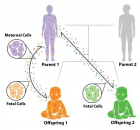
Figure 1
Similar Articles
-
Comparison of Cardiovascular Risks following Smoking Cessation Treatments Using Varenicline vs. NRT among Schizophrenic SmokersSusan Abughosh*,I-Hsuan Wu,Hua Chen,Ekere James Essien,Michael Johnson,Patrick Bordnick2,Ronald J Peters. Comparison of Cardiovascular Risks following Smoking Cessation Treatments Using Varenicline vs. NRT among Schizophrenic Smokers. . 2017 doi: 10.29328/journal.apmh.1001001; 1: 001-010
-
Impact of four obesity interventions on biometric measures of individuals positive and negative for food addictionTrina Aguirre*,Leeza Struwe,Ann Koehler,Rebecca Kreman,Rebecca Bowman,Erica Schulte,Kayla Pierce,Molly Bloodgood,effrey Holloway. Impact of four obesity interventions on biometric measures of individuals positive and negative for food addiction. . 2018 doi: 10.29328/journal.apmh.1001002; 2: 001-0005
-
Psychosocial care is necessary in supporting refugeesGudrun Widders*,Ute Teichert. Psychosocial care is necessary in supporting refugees. . 2018 doi: 10.29328/journal.apmh.1001003; 2: 006-008
-
Mental health promotion program in the workplace with focus on transportOlaf Jensen*,Fereshteh Baygi,George Charalambous,Agnes Flores,Lise Hedegaard Laursen,David Lucas,Debbie Andrioti. Mental health promotion program in the workplace with focus on transport. . 2019 doi: 10.29328/journal.apmh.1001004; 3: 001-011
-
Diseases of the mental sphere revealed by the psychiatrist at contingent of patients of the consultative outpatient admissionShapovalova LA*,Shapovalov КA. Diseases of the mental sphere revealed by the psychiatrist at contingent of patients of the consultative outpatient admission. . 2019 doi: 10.29328/journal.apmh.1001005; 3: 012-019
-
Cognition and Memory Impairment among Patients of Depression in Pakistan-The Role of Conventional and Newer Anti-DepressantsMadeeha Malik*,Muhammad Usama Khan,Azhar Hussain,Ayisha Hashmi. Cognition and Memory Impairment among Patients of Depression in Pakistan-The Role of Conventional and Newer Anti-Depressants. . 2019 doi: 10.29328/journal.apmh.1001006; 3: 020-024
-
Effectiveness of ethinyl oestradiol /cyproterone acetate and ethinyl oestradiol/ desogestrel with or without low-dose metformin on perceived health-related quality of life in hirsute women with polycystic ovary disease: A randomised, double-blind, placebo-controlled studySanjeewani Fonseka*,B Subhani,V Alahakoon,CN Wijeyaratne,IB Gawarammana,NS Kalupahana,N Ratnatunga,S Rosairo,PVR Kumarasiri. Effectiveness of ethinyl oestradiol /cyproterone acetate and ethinyl oestradiol/ desogestrel with or without low-dose metformin on perceived health-related quality of life in hirsute women with polycystic ovary disease: A randomised, double-blind, placebo-controlled study. . 2019 doi: 10.29328/journal.apmh.1001007; 3: 025-031
-
A Belgian program to fight child maltreatment: The “SOS children” teamsSophie Dechêne*,Emmanuel de Becker. A Belgian program to fight child maltreatment: The “SOS children” teams. . 2019 doi: 10.29328/journal.apmh.1001008; 3: 032-041
-
Microchimerism may be the cause of psychiatric disordersOsman Demirhan*,Bülent Demirbek. Microchimerism may be the cause of psychiatric disorders. . 2019 doi: 10.29328/journal.apmh.1001009; 3: 042-046
-
Transference and countertransference are linked to placebo-nocebo effects and they are an auxiliary resource of unparalleled value in general medicine: Recommendations for general practitionersJose Luis Turabian*. Transference and countertransference are linked to placebo-nocebo effects and they are an auxiliary resource of unparalleled value in general medicine: Recommendations for general practitioners. . 2020 doi: 10.29328/journal.apmh.1001010; 4: 001-006
Recently Viewed
-
Neuroanatomical profile of hemineglect in patient’s body image modificationMaurizio Falso*,Eleonora Cattaneo Psy. Neuroanatomical profile of hemineglect in patient’s body image modification. J Nov Physiother Rehabil. 2020: doi: 10.29328/journal.jnpr.1001029; 4: 001-008
-
Contemporary learning or E-Learning in physiotherapy, pre and post COVID-19: Short communicationMohammed Suhail*,Sharath C,Akhil Mathew. Contemporary learning or E-Learning in physiotherapy, pre and post COVID-19: Short communication. J Nov Physiother Rehabil. 2020: doi: 10.29328/journal.jnpr.1001030; 4: 009-010
-
A trial of conservative care for restoring scapular dyskinesis: A clinical seriesS Thiruvarangan*,P Srigrishna,B Thileebphan. A trial of conservative care for restoring scapular dyskinesis: A clinical series. J Nov Physiother Rehabil. 2020: doi: 10.29328/journal.jnpr.1001031; 4: 011-015
-
Determination of body image perception and life satisfaction in patients undergoing hemodialysisSevil Biçer*,Gökçe Demir. Determination of body image perception and life satisfaction in patients undergoing hemodialysis. J Nov Physiother Rehabil. 2020: doi: 10.29328/journal.jnpr.1001032; 4: 016-021
-
Physical activity and health-related quality of life among physiotherapists in Hebron/West BankMouath D Abushkadim,Akram Amro,Muntaser S Ahmad*. Physical activity and health-related quality of life among physiotherapists in Hebron/West Bank. J Nov Physiother Rehabil. 2020: doi: 10.29328/journal.jnpr.1001033; 4: 022-027
Most Viewed
-
Feasibility study of magnetic sensing for detecting single-neuron action potentialsDenis Tonini,Kai Wu,Renata Saha,Jian-Ping Wang*. Feasibility study of magnetic sensing for detecting single-neuron action potentials. Ann Biomed Sci Eng. 2022 doi: 10.29328/journal.abse.1001018; 6: 019-029
-
Evaluation of In vitro and Ex vivo Models for Studying the Effectiveness of Vaginal Drug Systems in Controlling Microbe Infections: A Systematic ReviewMohammad Hossein Karami*, Majid Abdouss*, Mandana Karami. Evaluation of In vitro and Ex vivo Models for Studying the Effectiveness of Vaginal Drug Systems in Controlling Microbe Infections: A Systematic Review. Clin J Obstet Gynecol. 2023 doi: 10.29328/journal.cjog.1001151; 6: 201-215
-
Prospective Coronavirus Liver Effects: Available KnowledgeAvishek Mandal*. Prospective Coronavirus Liver Effects: Available Knowledge. Ann Clin Gastroenterol Hepatol. 2023 doi: 10.29328/journal.acgh.1001039; 7: 001-010
-
Causal Link between Human Blood Metabolites and Asthma: An Investigation Using Mendelian RandomizationYong-Qing Zhu, Xiao-Yan Meng, Jing-Hua Yang*. Causal Link between Human Blood Metabolites and Asthma: An Investigation Using Mendelian Randomization. Arch Asthma Allergy Immunol. 2023 doi: 10.29328/journal.aaai.1001032; 7: 012-022
-
An algorithm to safely manage oral food challenge in an office-based setting for children with multiple food allergiesNathalie Cottel,Aïcha Dieme,Véronique Orcel,Yannick Chantran,Mélisande Bourgoin-Heck,Jocelyne Just. An algorithm to safely manage oral food challenge in an office-based setting for children with multiple food allergies. Arch Asthma Allergy Immunol. 2021 doi: 10.29328/journal.aaai.1001027; 5: 030-037

HSPI: We're glad you're here. Please click "create a new Query" if you are a new visitor to our website and need further information from us.
If you are already a member of our network and need to keep track of any developments regarding a question you have already submitted, click "take me to my Query."







